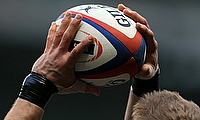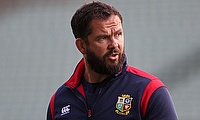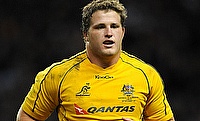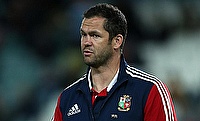British and Irish Lions with a twist
If The Rugby Championship is proving disheartening for southern hemisphere rugby fans outside of New Zealand, it’s not doing much for the hopes of northern hemisphere rugby fans, either.
The All Blacks have looked imperious in the Championship, dispensing of Australia, South Africa and Argentina with consummate ease and reinforcing, as if it was even needed, that they are the best side in the world.
They have lost only three games in the last four years – one apiece to Australia, South Africa and England – and are undefeated at home for the last seven years, with the Springboks’ 32-29 victory in Hamilton the last time the All Blacks tasted defeat on home soil.
The challenge the British and Irish Lions face next year may be the greatest in their history and it is going to require something extraordinary, not to mention utterly unexpected, to see them triumph in the biggest contest that rugby has to offer.
If you look at the three losses New Zealand have suffered in the past few years (Australia in Sydney in 2015, South Africa in Johannesburg in 2014 and England in London in 2012), there are some common themes for their opposition’s success.
Defensive line speed and the power to knock the All Blacks back, parity in the tactical kicking game, remarkable conditioning - plus a strong bench - and dominating the breakdown. In all three losses, New Zealand won less rucks than their opposition.
Other facets such as set-piece dominance, tackle efficiency and possession have had less bearing on the results. New Zealand had the set-piece advantage against Australia and South Africa, tackled more efficiently than South Africa and had more possession and territory than England.
With that in mind, there is a strong case for Warren Gatland to tailor his Lions XV purely to the goal of beating the All Blacks, rather than opting for the ‘best’ or most in-form 15 players at his disposal.
1. Mako Vunipola, England
Some will say Vunipola doesn’t offer the same scrummaging ability that a Jack McGrath or Joe Marler does, but he is still certainly adept enough to achieve parity with the All Blacks. A set-piece alone won’t see the Lions over the finishing line and Vunipola’s line speed and conditioning is exceptional for a prop.
2. Dylan Hartley, England
Hartley is an efficient lineout thrower and can strike quick ball at the scrum. The set-piece may not be as paramount against the All Blacks as conventional wisdom would suggest but it’s not an area you can afford to have as a weakness, either. It’s also no secret Hartley relishes the physical side of the game.
3. Dan Cole, England
You have to beat New Zealand at the contact area and Cole is quite the pilferer for a prop. This all-England front row got the better of Australia this summer and the Wallabies currently have a scrum which is superior to New Zealand. In addition, Cole is very well conditioned and has completed 80 minute shifts for England multiple times.
4. Courtney Lawes, England
The first really left-field suggestion, Lawes has the ability to disrupt the vaunted Aaron Smith-Beauden Barrett half-back combination of the All Blacks. His line speed, for a man his size, just doesn’t make sense and in addition to his highlight reel tackles, he is a threat to charge down Barrett’s excellent kicking from hand. His defensive lineout work is also amongst the best about.
5. Maro Itoje, England
If there are significant concerns over who would call the lineout in this pack, Itoje could be moved to six to incorporate one of George Kruis, Alun Wyn Jones or Jonny Gray in the engine room - or Iain Henderson if you want to go full destruction mode - but his inclusion is a must. He ticks every box – line speed, breakdown operator, non-stop engine – and is an inspirational leader on the field.
6. Ross Moriarty, Wales
It wouldn’t take long for Moriarty to get under the All Blacks’ skin, such is the abrasive nature of his game. Winning the breakdown battle is pivotal and there aren’t many better ruckers in the northern hemisphere than Moriarty. He would be key to ensure that the Lions can not only retain ball, but that they do so quickly and cleanly.
7. Sam Warburton, Wales
James Haskell is right on the cusp of this jersey and is widely regarded as the best conditioned player in the England set-up, but Warburton is built to take on the New Zealand back row. A canny contact area specialist with the engine to go for 80 minutes if required, the Welshman would be a prime captaincy candidate.
8. Taulupe Faletau, Wales
Just gets the nod over Billy Vunipola, as he slightly edges his cousin with his all-round game and defensive reliability. There are no weaknesses to Faletau’s game and he will be able to be a part of the high intensity press defence the Lions will need to succeed. Vunipola’s added dynamism as a carrier lends itself perfectly to impact from the bench.
9. Conor Murray, Ireland
Murray has been a little out of his groove these past 12 months but if he can rediscover his form, he’s the best game-managing nine amongst the home nations. His tactical kicking is excellent and it’s in this area where the Lions may have their work most cut out, trying to achieve parity with the best in the world, Aaron Smith.
10. Owen Farrell, England
Kicks well, passes well, runs well and is perfectly suited to the high line speed, aggressive defence the Lions need. Farrell is the most complete fly-half in the northern hemisphere, not to mention has experience of employing this game plan to perfection when England took on New Zealand in 2012.
11. George North, Wales
Tommy Seymour is hovering but memories of what North did to the Australians in 2013 keep him in this spot for now. Misconceptions that the All Blacks don’t care about size are rife and having a physical threat like North on the wing will keep the hosts earnest. His size also makes him a dangerous proposition as a cross-field kick target, a skill which Farrell is adept at.
12. Robbie Henshaw, Ireland
Shut New Zealand down on or before the gain line and you take a big step towards beating them. The likes of Brad Barritt and Jean de Villiers have helped to do that from the inside centre spot in the past and Henshaw has the defensive ability and robustness to do that for the Lions. As a former full-back he is also very adept in the air and that will help the Lions win the tactical kicking battle.
13. Duncan Taylor, Scotland
A criminally underrated player, Taylor lets you double up on defensive, stout centres who are going to make New Zealand’s midfield feel as uncomfortable as possible. Maybe for the sake of balance you look to a more offensive-minded player here, such as Jonathan Joseph or Mark Bennett, but Taylor is a solid attacker as well and shouldn’t be dismissed because of a bias against defensive players.
14. Anthony Watson, England
The speed of Watson sets him apart here and makes him another weapon in the tactical kicking battle that will undoubtedly rage across all three tests. In addition to pragmatically fitting the requirements of this XV, Watson also offers supreme footwork and a great turn of pace, making him the attacking threat that many will criticise this XV for lacking.
15. Alex Goode, England
If you want to control the tactical kicking – and therefore territory – game, it’s a simple choice between Goode and Leigh Halfpenny here. With Farrell at 10, you don’t have to rely on Halfpenny’s exceptional goal-kicking and that may give Goode the slight advantage because he is the more proficient counter-attacker. It’s harsh on Stuart Hogg, who is comfortably the most exciting full-back amongst the home nations, but exciting isn’t necessarily going to beat the All Blacks.





.jpg)


